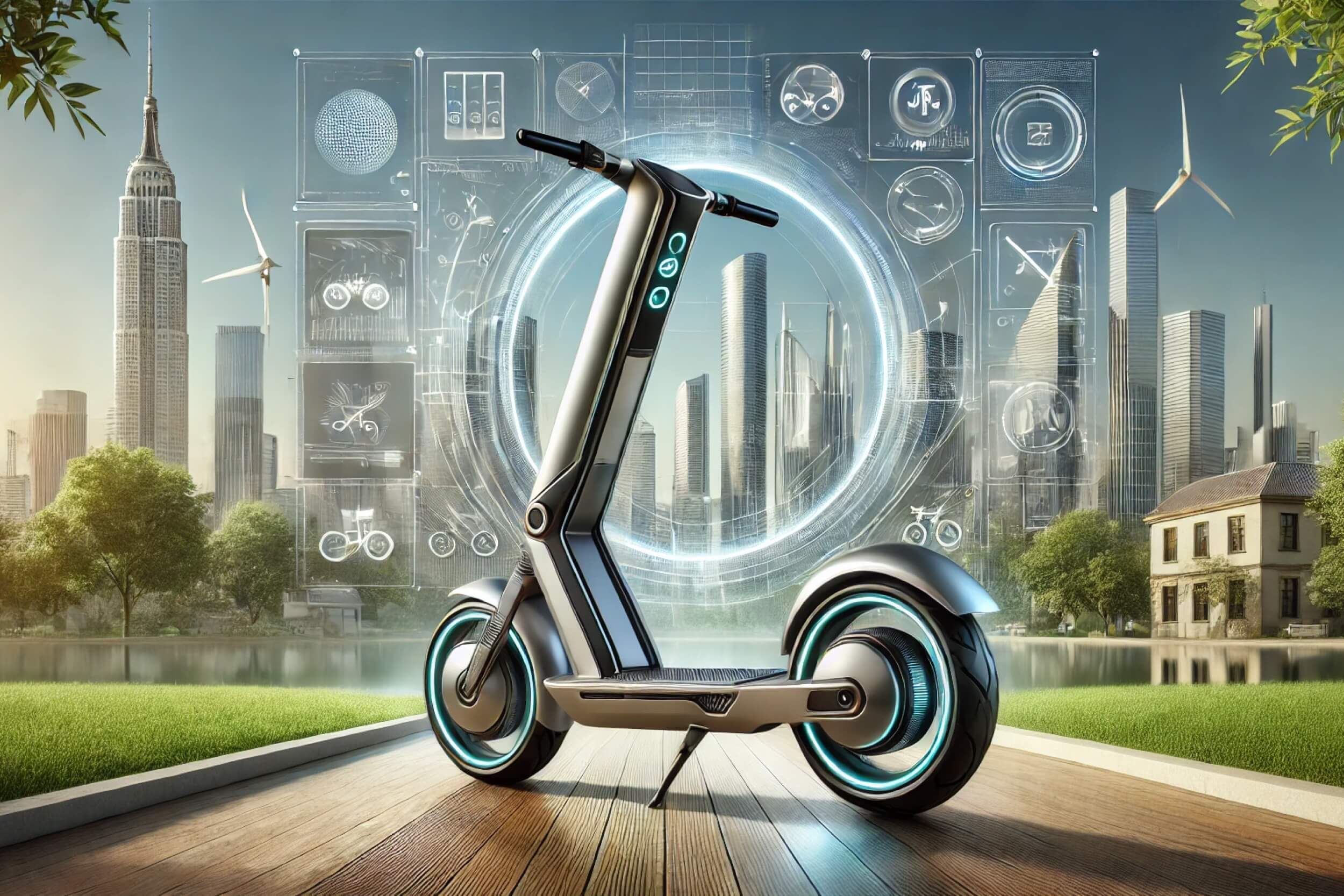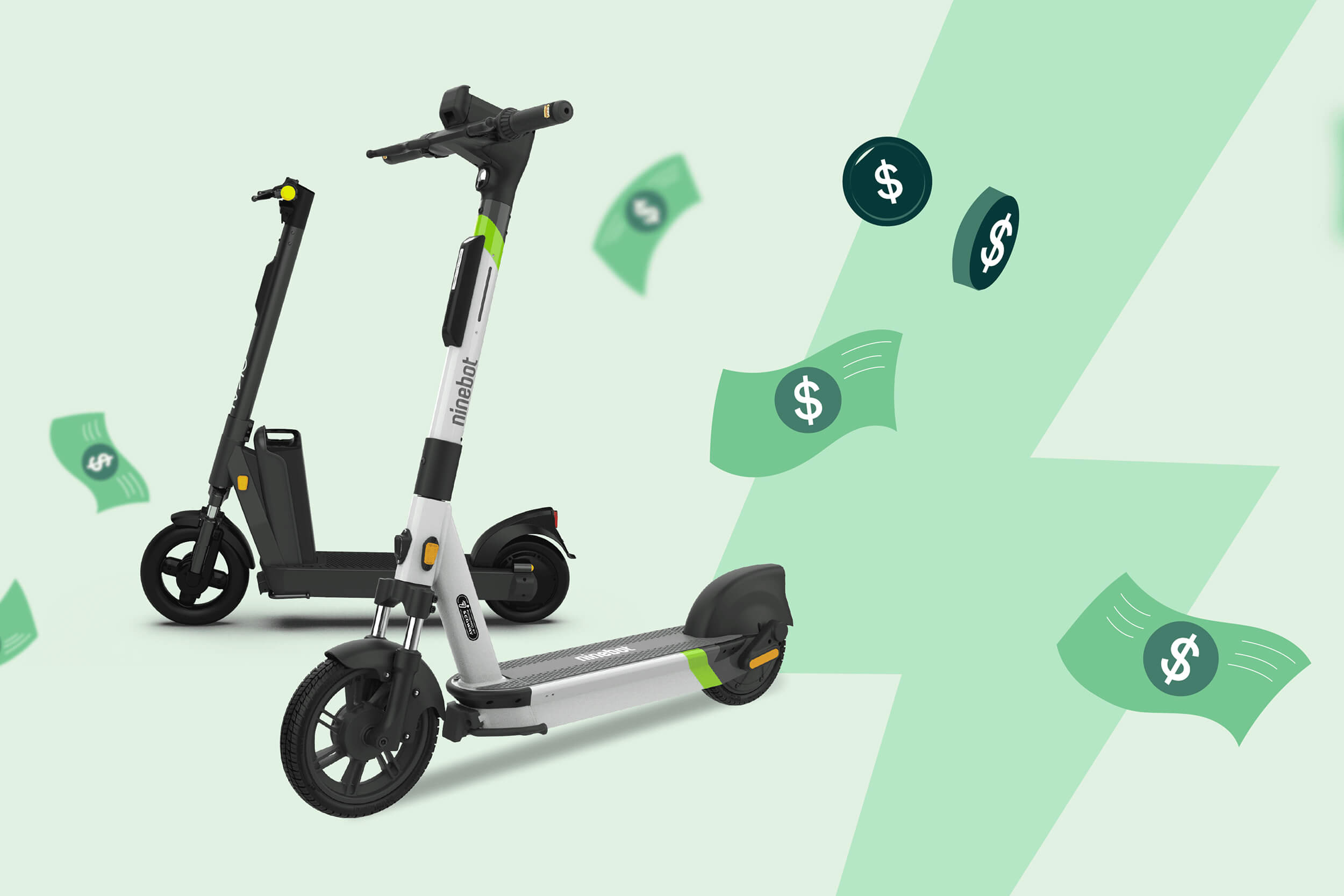
Environmental and Energy benefits of e-scooters over cars
October 1, 2024
E-Scooter Etiquette: How to Share the Road Responsibly
December 1, 2024E-scooters have quickly become a fixture in modern transportation, appealing to commuters, students, and eco-conscious riders across the globe. With a demand for speed, safety, sustainability, and convenience, e-scooter technology and design continue to evolve rapidly. Here’s a look at the most exciting e-scooter innovations on the horizon, focusing on advanced tech, sustainable solutions, safety features, and how these changes will shape the future of urban commuting.
1. Enhanced Battery Technology for Extended Ranges
Battery technology is at the core of e-scooter innovation, as range and battery life are critical factors for riders. One of the latest advances is the use of lithium-silicon and solid-state batteries, which are more energy-dense and can significantly increase range without adding weight. While traditional lithium-ion batteries have a limited lifespan and require frequent charging, these new battery technologies promise longer distances on a single charge, allowing riders to travel further between charges. Battery-swapping stations are another potential innovation, especially in urban centers where e-scooter rentals are popular. Instead of waiting for a scooter to charge, riders could swap depleted batteries with fully charged ones at designated kiosks. This not only reduces wait time but also promotes a circular economy model, where batteries can be easily maintained, replaced, and recycled.
2. Smart and Connected E-Scooters
With the rise of the Internet of Things (IoT), e-scooters are becoming smarter and more interconnected. Many modern e-scooters already offer app integration, allowing users to check battery life, monitor mileage, and track their scooter via GPS. However, future models will likely offer even more advanced features. For example, some companies are developing e-scooters with real-time diagnostic capabilities, which alert riders to potential mechanical issues before they become serious.
Another area of development is smart locks and anti-theft systems, which can be activated and monitored from a mobile app. These systems will deter theft by automatically locking the wheels if an unauthorized user tries to move the scooter and notifying the owner of any tampering. Additionally, integration with city infrastructure could allow e-scooters to communicate with traffic lights and other smart city elements, enabling smoother, safer rides.
3. Autonomous E-Scooters and Self-Balancing Technology
Autonomous vehicles aren’t just for cars. Companies are exploring self-driving capabilities for e-scooters, which could autonomously navigate to charging stations or pick-up points when not in use. Autonomous e-scooters could make rental systems more efficient by reducing downtime and ensuring that scooters are readily available where demand is highest.
Self-balancing technology is another promising innovation, using gyroscopes and sensors to keep scooters stable even on uneven surfaces. This technology is particularly useful for new riders, as it improves stability and control. Self-balancing e-scooters would also be beneficial in bad weather or on challenging terrains, making them more accessible to a broader range of users, including those with limited mobility or balance issues.
4. Improved Safety Features for Urban Riders
As e-scooters become more common in cities, manufacturers are prioritizing safety enhancements. Some e-scooters now feature advanced braking systems, like regenerative and dual-disc brakes, which provide better stopping power and contribute to battery recharge. Future models may also incorporate collision detection and avoidance systems, similar to those found in autonomous cars. Using sensors and cameras, these systems can detect nearby obstacles or vehicles and alert the rider to take action or, in some cases, apply automatic braking.
Additionally, new lighting and signaling technology is being integrated to improve rider visibility. LED strips and customizable lights are becoming standard, allowing riders to be seen from all angles. Some e-scooters also include turn signals and brake lights, enabling better communication with other road users, especially at night. These safety features contribute to a safer, more cohesive relationship between e-scooter riders, cyclists, and drivers in urban environments.
5. Eco-Friendly and Sustainable Materials
Environmental sustainability is a top priority for both consumers and manufacturers. Many companies are now exploring sustainable materials for e-scooter construction, such as recycled aluminum and biodegradable composites. These materials reduce the scooter’s environmental impact from production through disposal.
Moreover, some companies are experimenting with solar-powered e-scooters, equipped with photovoltaic cells that recharge the battery as the scooter is exposed to sunlight. While solar charging alone may not be enough to fully power a scooter, it can help extend battery life, especially for riders who use their scooters frequently in sunny areas. By incorporating sustainable materials and renewable energy, the e-scooter industry is striving to meet the demand for eco-friendly transportation.
6. Customizable and Modular Designs
Personalization is another emerging trend in e-scooter design. Modular e-scooters with interchangeable parts allow users to customize their scooters according to their preferences or needs. For example, riders might choose between different tire types, suspension settings, or handlebar styles based on their commuting environment or personal preferences.
Modularity also makes e-scooters more versatile and durable. If a part becomes damaged, it can be easily replaced without requiring a new scooter, which is more cost-effective and environmentally friendly. Customizable scooters appeal especially to young, tech-savvy users who view their scooters as extensions of their personal style and lifestyle.
7. Faster Charging and Energy Efficiency
E-scooter users often face the inconvenience of long charging times. Innovations in charging technology, including fast-charging batteries and ultra-fast charging stations, are helping reduce wait times significantly. Some manufacturers are experimenting with batteries that can fully recharge in under an hour, making it more practical for daily use. Furthermore, energy-efficient motors and regenerative braking systems help maximize the battery’s performance, reducing the need for frequent recharges and lowering the overall cost of ownership.
With these exciting advancements on the horizon, the future of e-scooter technology and design looks bright. From smarter, connected scooters to self-balancing systems and sustainable materials, each innovation adds new value to this already popular mode of transportation. As e-scooters continue to evolve, they will become even more accessible, practical, and sustainable, catering to the needs of a diverse range of riders in Canada and beyond. With each new development, e-scooters are redefining urban mobility and setting a new standard for eco-friendly, efficient travel.



